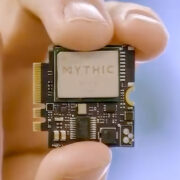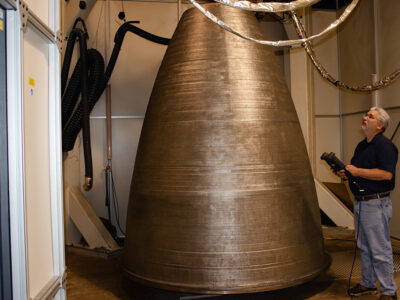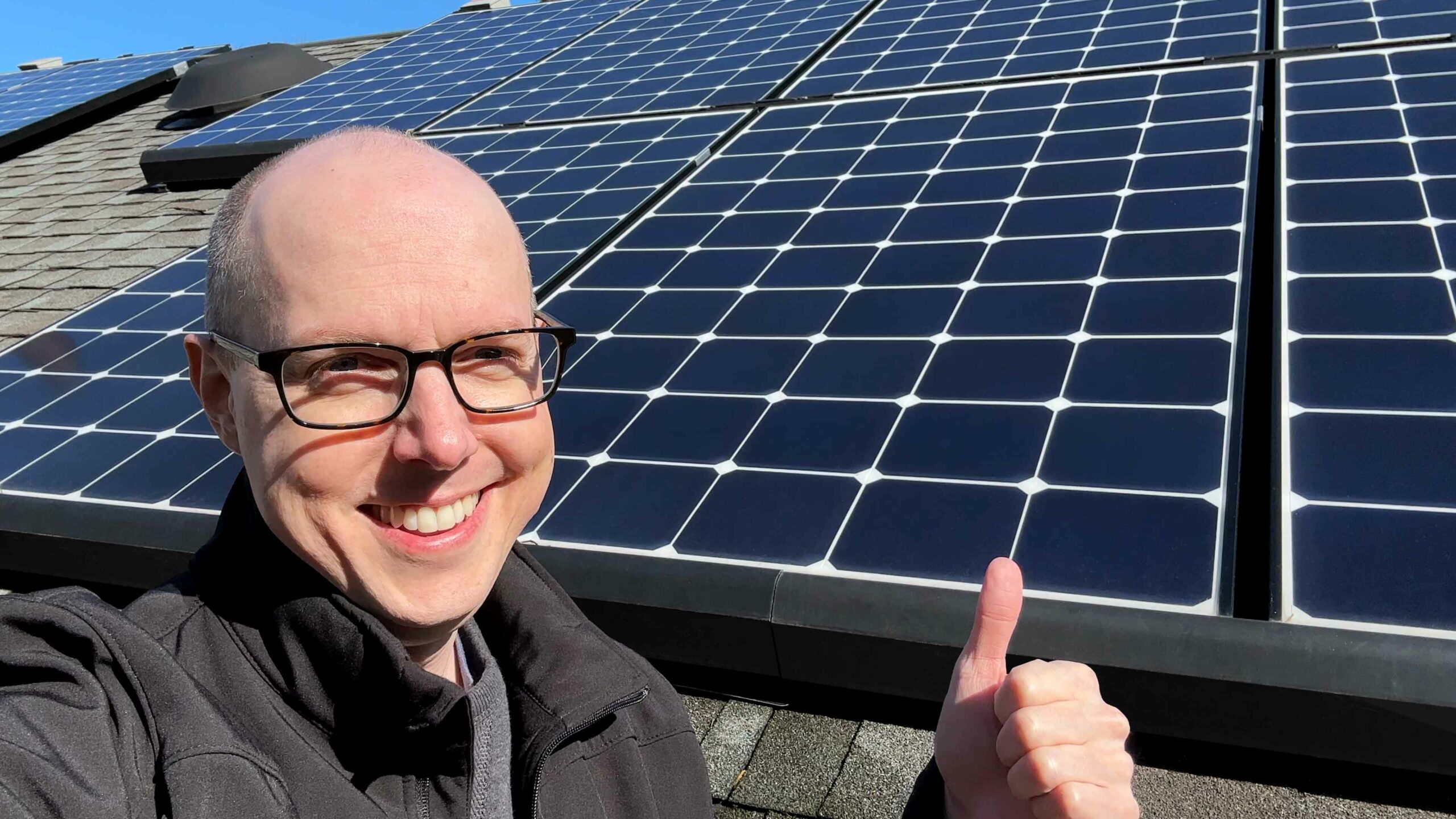Just 2 years ago, the Planet of Humans documentary…shot…renewables in the face. To the point that one of the interviewees, Ozzie Zehner, said about renewables and recycling, “you would have been better off just burning the fossil fuels to begin with.”1 I get countless comments on my videos calling various topics like EVs, wind turbines, solar panels, battery tech … you name it … “scams,” or “not possible,” or that it’s been “debunked.” Debunking is nothing new. History tells us that many technologies were debunked and said to be failures before they went on to change the world. Let’s take a look at why we love to hate things, and 5 examples of technological advancements that proved the naysayers wrong.
Unconscious debunkers
There’s a steady stream of skepticism and “debunking” that comes up around solar panels, wind turbines, battery storage, electric vehicles, you name it. Tesla has been doomed to fail since they first began selling cars. Every time a light bulb moment goes off in an innovator’s mind, there are many others who try to switch it off. Demanding scientific evidence is fair enough, but sometimes the excess of disbelief is a little out of control.
There are 5 great examples of this from the history of technology, but before we get into those … what drives all of this? Well, there’s such a thing as a sort of creativity paradox. We like creative ideas, but at the same time we’re kind of scared of them. That’s pretty much the outcome of a study conducted by the University of Pennsylvania on more than 200 people back in 2010.2 Researchers found novel ideas promote a sense of uncertainty that makes most people … uncomfortable. To add to that, objective evidence supporting a new concept wasn’t enough to avoid rejection from most of the study’s participants. Sound familiar? So, what’s causing that? Based on their tests, scientists unveiled an unconscious bias that led people to reject novel and high quality products. But there’s another interesting thing researchers concluded. We might not be aware of our hostile behavior against those creative ideas. And that’s undermining our capacity to even recognize them. I don’t know about you but that makes me feel … uncomfortable.
Keeping yourself in a sweet spot between skepticism and open-mindedness should be the ideal balance, but might be more tricky than you think. Yet, the main takeaway is that a naysayer attitude can make us reject something valuable. And it’s not just science telling us that. History does too. And before you start typing away in the comment box to debunk this … let’s dive into 5 inventions that people labelled as scam when they originally came out.
1. Alternating current
The development of alternating current (AC) power systems was definitely one of the major breakthroughs of the 20th century. While AC had already been invented before his time, Nikola Tesla refined the technology and made it more practical. His creative genius sparked when he was still a student at the Joanneum Polytechnic School in Graz, Austria. Observing a dynamo converting alternating current into direct current, the Serbian-American inventor told his teacher he could tweak the mechanism to get rid of the commutator. While Tesla’s instructor burst into laughter, Nikola was already envisioning what became his famous polyphase induction motor in 1887.3 Instead of using a commutator to reverse the current direction, Tesla’s system used multiple ACs to create a magnetic field. This induced a current that turned the motor.
His teacher wasn’t the only one to criticize his ideas. He was often ridiculed by the energetic critics on behalf of his main opponent, Thomas Edison … who had a bit of an agenda when it came to Tesla. The father of direct current thought that “fooling around with alternating current is just a waste of time. Nobody will use it, ever.”4 Clearly, Edison was biased. And not just unconsciously, but that was just the onset of the war of currents. Besides making fun of his rival’s intuition, Edison built up the tension even more, sponsoring public demonstrations to throw mud on AC.5 He tried to terrorize people, touting AC as something as dangerous as an electric chair. And Tesla wasn’t his only target. Edison charged Westinghouse, the entrepreneur investing in the AC system, with attempted murder. “Westinghouse will kill a customer within 6 months after he puts in a system of any size.”6 To prove his point on the AC’s safety risk, Edison also filmed the electrocution of an animal in a public zoo.7 However, despite the harsh resistance, AC won the heated battle. Being able to convert power voltage and carry it over long distances with minimal losses, the AC system paved the way for the electrification of homes and buildings around the world.
2. Airplanes
Everything’s hard at the beginning, Wright? Get it? The Wright brothers? Anyway, in 1901, after a few unsuccessful trials, the pioneer of aircrafts, Wilbur Wright, debunked himself saying “Man will not fly for 50 years.”8 Uplifted by those words, the Director of the US Naval Observatory chimed in, proclaiming “Flight by machines heavier than air is impractical and insignificant, if not utterly impossible,” Yet, Wright disproved his own words and everyone else’s just two years later when flying the world’s first “heavier-than-air” craft over Kitty Hawk in North Carolina with his brother. But the flying duo had to fight against other skeptics. A year after their historic flight, public opinion still didn’t trust their invention and the Scientific American magazine demanded more down-to-earth proof.9
This lack of trust in airplanes was fueled by reputable scientists as well. Like Professor Newcomb, who wrote an article just two months before the Wright brothers flight. The scientist argued that even if anybody managed to fly, it would be impossible to stop without crashing.10 Clearly, he was wrong, but believable given the physics knowledge of the time. The renowned astronomer William H. Pickering, who worked at the Harvard College Observatory, was one of the last to hop on the anti-flying bandwagon, stating that “It is clear that with our present devices there is no hope of aircraft competing for racing speed with either our locomotives or automobiles.”
Things quickly shifted despite the critics with the beginning of World War I, when governments began spending money on air forces. The conflict then paved the runway for air travel to flourish. In 2019, the world’s airlines performed 38.9 million flights.11 Could you imagine not being able to fly nowadays?
3. Space travel
At the beginning of the 20th century, the Russian scientist Konstantin Tsiolkovsky envisioned that humans could explore space using rockets. As you can probably guess by now, you can see where I’m going with this, his far-sighted theories gained a good amount of laughs.12 There was plenty of space for skeptics to discount Tsiolkovsky’s idea. Like Lee De Forest did in 1920. When talking about space travel, the American inventor said, “I am bold enough to say that such a man-made voyage will never occur regardless of all future advances.” That held up well.
Even The New York Times had its say on the topic, “A rocket will never be able to leave the Earth’s atmosphere.” The skeptics predictions began to disintegrate when the Nazis launched the first long-distance rockets over London during World War II. The end of the conflict on the battlefield led the way to a technological fight between the US and the Soviet Union. And then the launch of Sputnik, the first artificial satellite to orbit Earth in 1957. Sputnik was a key milestone to allow Yuri Gagarin to blast off in 1961 when he became the first human to travel into space.13
A few years later, propelled by the Cold War competition, the US fired back by landing the Apollo 11 Lunar Module on the Moon. Despite six hundred million people around the world watching it live, many thought it was a sort of Truman Show with conspiracy theories that the footage was a NASA-produced film directed by Stanley Kubrik.14 In 1976, someone even self-published a book called “We Never Went to the Moon,” claiming to have some secret government documents to support his catchy title. While the book’s sales didn’t skyrocket the author spread fake news all over the media.
Although 20% of Americans still believe the 1969 landing was a government hoax, space travel didn’t stop. The U.S., Russia and China have had their own functional space stations.15 On top of that, 16 countries have been jointly developing the international space station.16 Also, companies such as SpaceX, Virgin Galactic, and Blue Origin are working on making flights cheaper and on space tourism.17 It’s going to be hard to claim space travel is a hoax when you’re finally able to go to space yourself.
4. Personal computers
Famous for breaking the Enigma code during World War II, Alan Turing is often considered the father of computing machines. When working for the UK National Physical Laboratory in 1946, Turing designed the Automatic Computing Engine (ACE). This was the world’s first electronic computer, able to store programs.18 19 While Turing just started up the digital computer era, in 1949 someone thought PCs had hit a … stand-by mode. The computer scientist John von Neumann said “It would appear that we have reached the limits of what it is possible to achieve with computer technology,”.20
Not only computer power crashed von Neumann’s conservative limit, but based on Moore’s law computer processing speed has been growing exponentially over the last 40 years.21 But von Neumann wasn’t the only one who miscalculated his predictions. In 1977 Ken Olson, the founder of the computer company Digital Equipment Corp stated, “There is no reason anyone would want a computer in their home.” Funny enough, that same year Steve Jobs launched his Apple II on the market, whose sales boomed by the end of 1970s. By 2012, 80% of Americans had proved Olson wrong.22
5. Cell phones
In 1973, the Motorola engineer Martin Cooper presented the first portable phone prototype ever during a news conference.23 The day after its introduction to the world, one of the reporters described the Motorola device as, “A television set in a wrist watch.”24 Also, just eight years later, it was actually Cooper himself that said, “cellular phones will absolutely not replace local wire systems. Even if you project it beyond our lifetimes, it won’t be cheap enough.”25 I’m assuming he changed his mind in 2004, when mobile phones overtook landlines in the US.26
And in 2007 there were plenty of skeptics of the iPhone. Some thought it was too expensive and others called into question the futuristic features touted by Steve Jobs. Steve Ballmer, the CEO of Microsoft at the time said, “There’s no chance that the iPhone is going to get any significant market share.” Well, I don’t know about you but I think 23% is a pretty good market share just 4 years after its launch.27
A Bloomberg journalist commented, “It is nothing more than a luxury bauble that will appeal to a few gadget freaks. In terms of its impact on the industry, the iPhone is less relevant.” In 2018, Apple’s flagship device became the world’s best-selling smartphone.28 The general public didn’t miss out on the short-sighted observations either. One guy said, “Apparently none of you guys realize how bad of an idea a touchscreen is on a phone. I foresee some pretty obvious and pretty major problems here.” He was right…nobody realized adding a touchscreen to a phone was a bad idea. That’s why today every single smartphone has one.
Balance of Humans
If you look back at the history of these inventions, you may see why it’s wise to think twice before doubling down on a knee-jerk reaction. An innovations early struggles doesn’t necessarily mean they’re doomed to fail. And this applies to the green tech innovations that we seeing emerge today. Take renewables for instance. They all share a bunch of downsides like fossil fuels reliance, raw materials limitations, and intermittency. Yet, technology advancements over the last 10 years have driven down their cost by up to ca. 90%.29 What about electric cars? You might have heard people complaining about short driving ranges, not having enough charging points, or dirty battery production.30 Those are all changing and addressable problems. For instance, while lithium extraction is far from being economically and environmentally sustainable right now, companies are commercializing low-impact recycling processes.31 Which means we may need 50% less Lithium to make an EV in 10 years.
So, where should we stand on this? Balance is the way to go. While having an inquisitive mind helps innovators to refine their inventions, we’ve got to work at keeping our unconscious bias at bay. Stay skeptical, but reasonable.
- “Michael Moore’s latest film is riddled with errors — and millions … – Grist.” 29 Apr. 2020 ↩︎
- “Why we crave creativity but reject creative ideas — ScienceDaily.” 5 Sept. 2011 ↩︎
- “How did Nikola Tesla change the way we ….” 14 Jul. 2008 ↩︎
- “10 Inventions No One Thought Would Be a Success – Culture Trip.” ↩︎
- “‘War of the Currents’ Had Profound Impact – The New York Times.” 6 Feb. 1979 ↩︎
- “Edison vs. Westinghouse: A Shocking Rivalry | History | Smithsonian ….” 11 Oct. 2011 ↩︎
- “Jan. 4, 1903: Edison Fries an Elephant to Prove His Point | WIRED.” 4 Jan. 2008 ↩︎
- “10 Inventions No One Thought Would Be a Success – Culture Trip.” ↩︎
- “7 (Supposedly) Impossible Scientific Achievements – Thomasnet.” 7 Feb. 2020 ↩︎
- “They Wouldn’t Believe The Wrights Had Flown – Wright-Brothers.org.” ↩︎
- “Airline industry worldwide – number of flights 2004-2021 | Statista.” ↩︎
- “10 Inventions No One Thought Would Be a Success – Culture Trip.” ↩︎
- “The History of Space Exploration | National ….” 24 Jan. 2020 ↩︎
- “Who Believes in the Moon Landing? | The New Yorker.” 22 Jul. 2019 ↩︎
- “Space Stations – Space Foundation.” ↩︎
- “15 Out-of-This-World Facts About the International Space Station ….” ↩︎
- “Space Tourism: 5 Space Companies That Will Make … – Revfine.com.” 23 Feb. 2021 ↩︎
- “Alan Turing: Creator of modern computing – BBC Teach.” ↩︎
- “The life changing inventions the experts said were … – News.com.au.” 1 Aug. 2016 ↩︎
- “10 Inventions No One Thought Would Be a Success – Culture Trip.” ↩︎
- “Technological Progress – Our World in Data.” ↩︎
- “10 Inventions No One Thought Would Be a Success – Culture Trip.” ↩︎
- “The History Behind the Invention of the First Cell Phone – Interesting ….” 24 Jan. 2021 ↩︎
- “Snarky journos mocked the first cellphone | Stuff.co.nz.” 5 Apr. 2013 ↩︎
- “10 Inventions No One Thought Would Be a Success – Culture Trip.” ↩︎
- “Cellphone Numbers Overtake Land Lines – Los Angeles Times.” ↩︎
- “Apple iPhone smartphone market share worldwide 2007 … – Statista.” 5 May. 2021, ↩︎
- “iPhone X was world’s best-selling smartphone model in first quarter ….” 4 May. 2018 ↩︎
- “Why did renewables become so cheap so fast … – Our World in Data.” 1 Dec. 2020 ↩︎
- “The truth about electric cars – myths vs facts – YouTube.” 1 Jan. 2019 ↩︎
- “Lithium-Ion Recycling Company Is Going Public | CleanTechnica.” 27 Feb. 2021 ↩︎














Comments